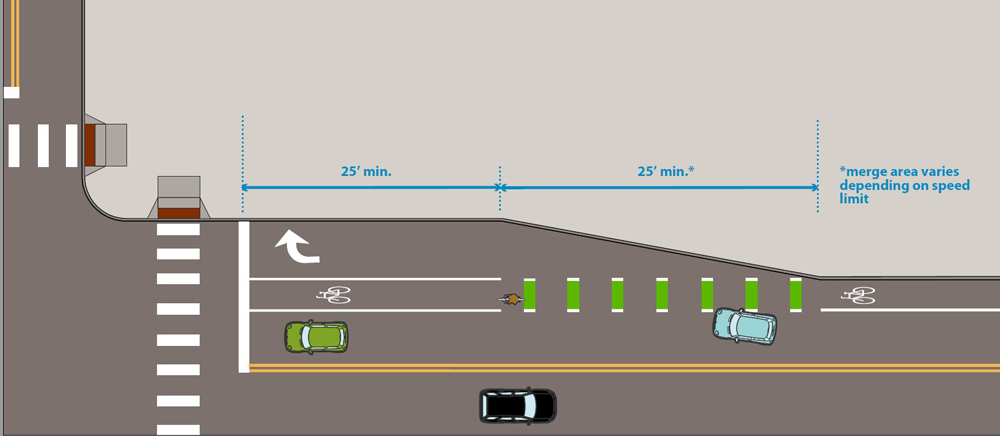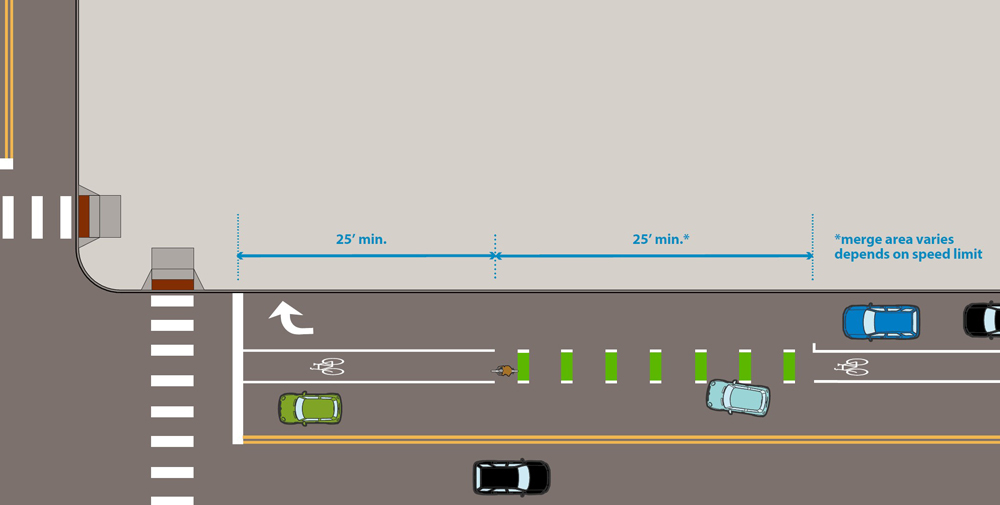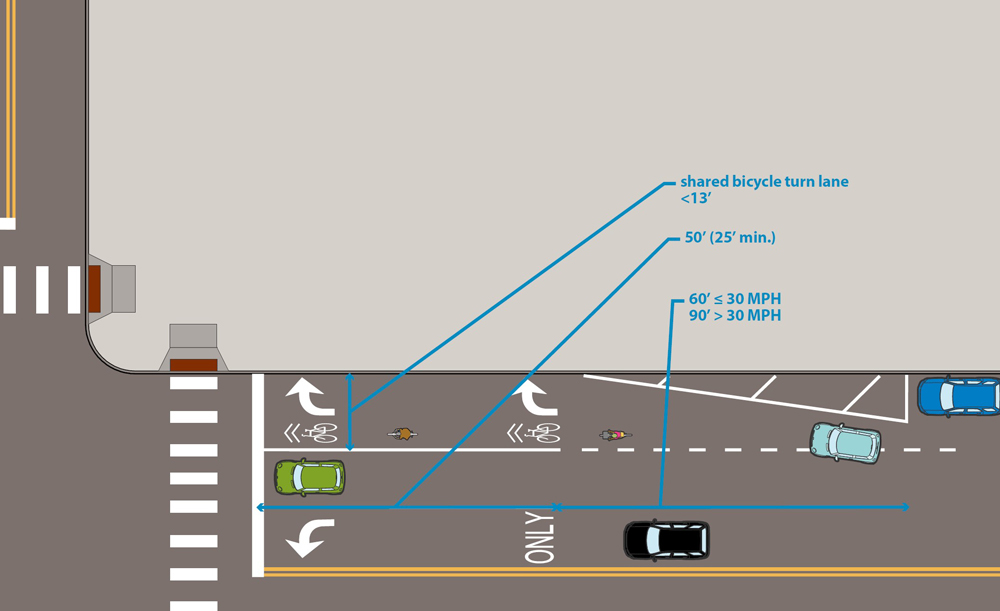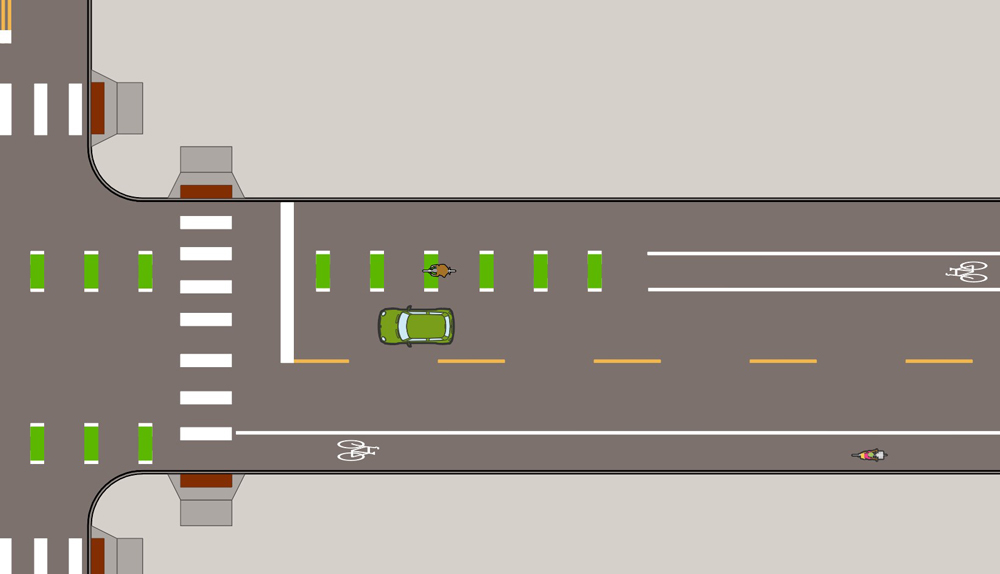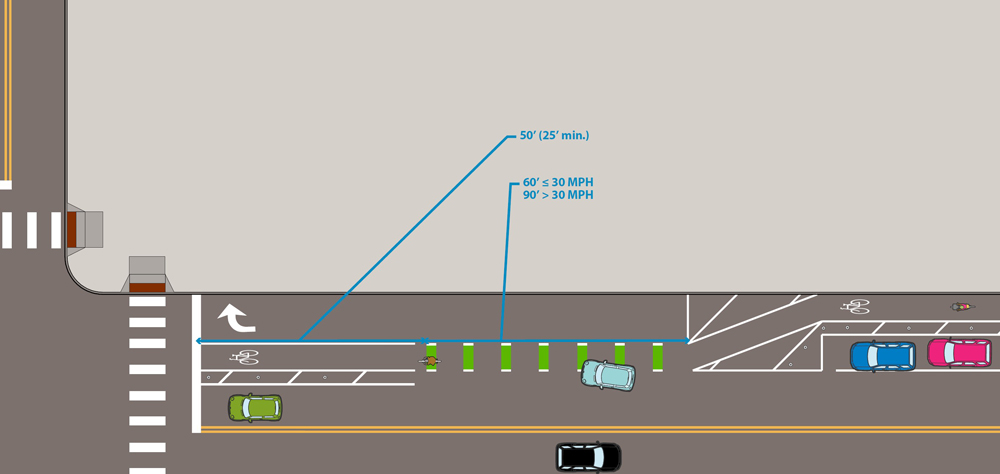Bike lane retrofit projects with mixing zones
Search Content
Download PDF
Print Guide
Introduction
This guidance should be used for street retrofit bike lane projects where implementing protected intersections is not feasible and mixing zones are required. This guidance is not intended for use with street reconstruction projects.
Bike lane adjacent to Dedicated Turn Lanes
At intersections with dedicated turn lanes, provide separate space for the bike lane and turn lane whenever feasible. At intersection approaches, drivers must yield to bikes in the mixing area to enter the turn lane.
Figure 3.7E.7:
Bike lane adjacent to dedicated turn lane
Design Considerations
|
Bike lane location |
|
|
Merging location |
The merge location should be located a minimum 30 feet in advance of the intersection. |
|
Mixing zone dimensions |
Mixing zone length should be determined by the posted speed limit. |
|
Signage |
BEGIN RIGHT-TURN LANE YIELD TO BIKES (R4-4) should be installed at the beginning of mixing zones. |
|
Striping |
Green conflict zone makings are recommended for the mixing area to indicate the preferred bicycle travel path and to increase driver awareness. |
|
Parking |
Parking should be prohibited a minimum of 10’ in advance of the beginning of the motor vehicle taper. |
Shared Bicycle Right-Turn Lane
In space-constrained locations with a dedicated right-turn or left-turn lane, bike lanes may share the turn lane space to continue through the intersection. Since shared lanes are not as comfortable as dedicated bike lanes, they should only be pursued with street retrofit projects where all other bike lane intersection design options are exhausted.
Figure 3.7E.8:
Shared bicycle right-turn lane
Design Considerations
|
Pavement markings |
|
|
Signage |
|
Bike lane at Intersections Without a Turn Lane
Most intersections throughout Minneapolis lack dedicated turn lanes. Bike Lane mixing zones are typically employed upstream of unprotected intersections to indicate where drivers should merge into the bike lane to complete a turn.
Design Considerations
|
Dimensions |
Mixing zones are typically 60’ in length and are striped upstream of intersections or in advance of transit stops. |
|
Striping |
|
One-way Protected Bike Lane with Mixing Zone
Protected intersections are preferred but not always feasible with protected bike lane retrofit projects. As a result, protected bike lanes may be design with mixing zones when space constraints preclude protected intersections.
Design Considerations
|
Mixing Zones |
One-way protected bike lanes may incorporate mixing zones to accommodate dedicated right-turn lanes. Follow details in “Bike lanes adjacent to a dedicated turn lanes” guidance. |
|
Vertical delineation |
One-way on-street protected bike lanes should extend vertical delineation to the intersection whenever possible. |
|
Bike lane taper |
When transitioning the protected bikeway from adjacent to the curb to the left of a dedicated turn-lane, locating the bike lane taper in advance of the mixing zone is preferred. |

